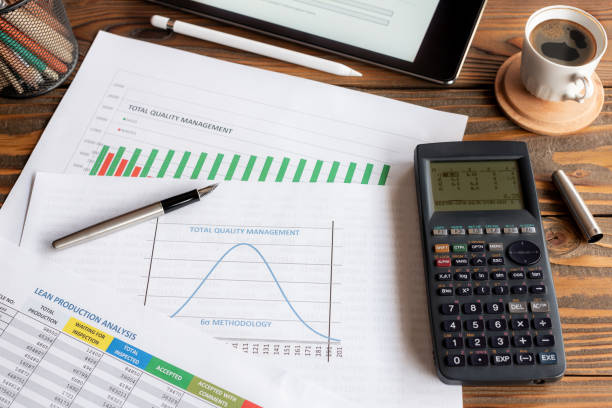Total Productive Maintenance (TPM) and Lean Manufacturing are two complementary methodologies that focus on optimizing equipment performance, reducing waste, and enhancing overall productivity. By combining these approaches, organizations can achieve operational excellence, drive continuous improvement, and increase their competitive edge. In this comprehensive guide, we will explore the synergies between TPM and Lean Manufacturing and discuss strategies for successfully integrating these methodologies into your operations.
Understanding TPM and Lean Manufacturing:
Total Productive Maintenance (TPM) is a holistic maintenance strategy that aims to optimize equipment performance, minimize downtime, and improve overall productivity. TPM involves empowering employees, fostering a culture of continuous improvement, and leveraging technology to streamline maintenance processes.
Lean Manufacturing, on the other hand, is a management philosophy that seeks to eliminate waste and inefficiencies in production processes. It focuses on delivering maximum value to customers while minimizing the consumption of resources. Lean Manufacturing relies on principles such as just-in-time production, continuous improvement, and employee involvement to optimize production processes and enhance overall performance.

Synergies between TPM and Lean Manufacturing:
TPM and Lean Manufacturing share several core principles and objectives, making them natural partners in the pursuit of operational excellence. Some of the key synergies between these methodologies include:
Continuous improvement: Both TPM and Lean Manufacturing emphasize the importance of continuous improvement and strive to identify and address opportunities for enhancing equipment performance, reducing waste, and improving productivity.
Employee involvement: Both methodologies recognize the critical role of employees in driving improvement efforts and encourage employee participation, skill development, and empowerment.
Waste reduction: TPM and Lean Manufacturing both aim to reduce waste and inefficiencies, whether it’s through optimizing equipment performance (TPM) or streamlining production processes (Lean Manufacturing).
Customer focus: Both methodologies prioritize delivering value to customers by ensuring reliable, high-quality products and services.
Integrating TPM and Lean Manufacturing for Operational Excellence:
Successfully integrating total productive maintenance and Lean Manufacturing can help organizations unlock the full potential of these complementary methodologies. Here are some strategies for achieving operational excellence through the integration of TPM and Lean Manufacturing:
Align goals and objectives: Establish clear, shared goals and objectives for your TPM and Lean Manufacturing initiatives, such as reducing downtime, minimizing waste, and enhancing overall productivity. This will help ensure that both methodologies are working in harmony to achieve common objectives.
Develop a comprehensive implementation plan: Create a detailed roadmap for implementing TPM and Lean Manufacturing principles across your organization, including milestones, key performance indicators (KPIs), and resource allocation.
Leverage total productive maintenance consulting: Engaging with total productive maintenance consulting experts can provide valuable insights and guidance on integrating TPM and Lean Manufacturing effectively. These consultants can offer tailored solutions and best practices to help organizations achieve operational excellence.
Provide training and resources: Equip employees with the necessary skills and knowledge to effectively implement TPM and Lean Manufacturing principles. Offer ongoing training, workshops, and access to resources to ensure that employees are prepared to contribute to the success of these initiatives.
Monitor and measure progress: Regularly track your progress against the KPIs established in your implementation plan. Use data-driven insights to identify areas of improvement and adjust your strategy as needed to achieve continuous improvement.
Foster a culture of collaboration and knowledge sharing: Encourage cross-functional collaboration and knowledge sharing among employees to facilitate the exchange of ideas, experiences, and best practices. This can help create a supportive learning environment and drive continuous improvement across the organization.
10. Benefits of Integrating TPM and Lean Manufacturing:
Integrating total productive maintenance and Lean Manufacturing can yield numerous benefits for organizations, including:
Enhanced equipment performance: Combining TPM’s focus on optimizing equipment performance with Lean Manufacturing’s emphasis on waste reduction can result in improved equipment reliability and efficiency.
Reduced downtime: By proactively addressing potential equipment issues and streamlining production processes, organizations can significantly minimize unplanned downtime and its associated costs.
Improved resource utilization: Integrating TPM and Lean Manufacturing enables organizations to allocate resources more efficiently, reducing waste and maximizing the value of time, materials, and labor.
Increased productivity: By optimizing equipment performance, minimizing downtime, and eliminating waste, the combined approach of TPM and Lean Manufacturing can contribute to increased output and overall productivity.
Enhanced competitiveness: Achieving operational excellence through the integration of TPM and Lean Manufacturing can help organizations increase their competitive edge by delivering high-quality products and services in a cost-effective manner.
Conclusion:
In conclusion, the integration of Total Productive Maintenance (TPM) and Lean Manufacturing provides a powerful framework for organizations seeking to achieve operational excellence and enhance overall productivity. By capitalizing on the synergies between these two complementary methodologies, organizations can optimize equipment performance, streamline production processes, and reduce waste in a systematic and sustainable manner.
To successfully integrate TPM and Lean Manufacturing, organizations should focus on aligning their goals, developing a comprehensive implementation plan, leveraging total productive maintenance consulting, and fostering a culture of collaboration and knowledge sharing. This approach ensures that employees across all levels are engaged and empowered to contribute to the success of these initiatives.
The benefits of integrating TPM and Lean Manufacturing are numerous and far-reaching. Organizations that effectively combine these methodologies can expect to experience improved equipment performance, reduced downtime, better resource utilization, increased productivity, and enhanced competitiveness. Furthermore, the continuous improvement mindset inherent in both TPM and Lean Manufacturing fosters an environment of innovation and adaptability, positioning organizations for long-term success in an ever-evolving global market.
Ultimately, the partnership between TPM and Lean Manufacturing represents a perfect union of strategies that drive operational excellence. Organizations that embrace this integrated approach are well-equipped to navigate the challenges of today’s competitive landscape and thrive in the pursuit of ongoing improvement and growth.
View your news on Google News or contact our team 


